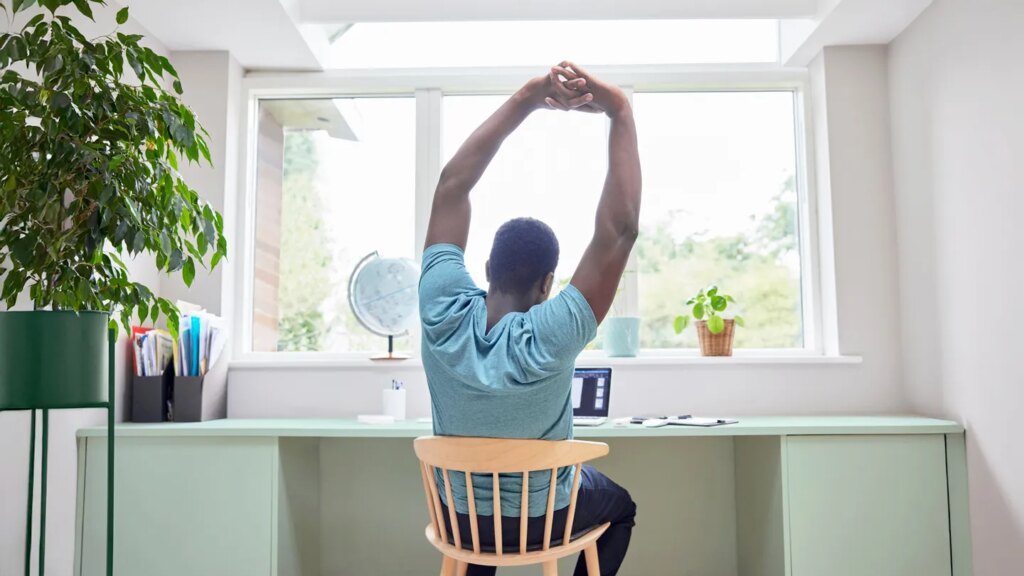10 Dos and Don’ts for Improving Your Posture
You likely won’t maintain proper posture all the time — many of our posture-driven behaviors are unconscious. Instead of feeling pressure to be perfect, focus on improving bad posture and maintaining good posture in ways that help you move with ease throughout your day, Dr. Archambault suggests. Here are tips our experts recommend.
1. Don’t Skimp on Stretching and Strengthening
When he sees a patient with neck or shoulder pain that may be posture-related, McCluskey refers them to a physical therapist, who typically provides posture exercises for the back and core, including strengthening and stretching. “All those muscles need to be strong and toned in order for you to maintain good posture,” he says. They also shouldn’t be too tight either, McCluskey adds.
2. Do Adjust Your Computer Monitor to Eye Level
This is the appropriate height for working at a desk all day while maintaining proper posture, McCluskey says. “Because if you’re having to look down at your monitor, it’s easy for your shoulders to round forward and for you to have to crane your neck,” he says. Ergonomic chairs and standing desks can also help, he adds.
3. Don’t Spend a Lot of Time in Heels
You may love your favorite stilettos, but they aren’t the best for your posture. “Wearing shoes with a high heel makes it more difficult to maintain posture,” McCluskey says. That’s because heels change the position of your pelvis and all of the back muscles attached to it, he says.
Comfortable, supportive, flatter shoes are a safer bet if you’re concerned about improving your posture, he adds.
4. Do Practice Good Posture
Think back to McCluskey’s wall test above and how it felt to move into better posture. Then, routinely remind yourself to straighten up throughout the day, especially if you notice yourself leaning forward, McCluskey advises. “Think about squeezing those shoulder blades together and making sure that your neck is not out front,” he says.
5. Don’t Look Down at Your Phone Too Much
Take frequent breaks from using your cellphone and aim to improve your posture when you’re on your phone, too.
6. Do Consider Posture Devices
There are various wearables that can act as your posture coach. Some attach to your clothing or between your shoulder blades to notify you when you slouch and remind you to straighten up, McCluskey says. Others you wear like a bra or a shirt; these may be tight or restrictive enough to actively prevent you from rounding your shoulders forward, he notes. You can purchase these online, or from some sporting goods or electronics stores.
7. Don’t Carry a Bag on One Side
8. Do Try ‘Adult Tummy Time’
“When you’re lying on your stomach, you’re using gravity to help you straighten your body out,” McCluskey says. You’ll likely feel a stretch in your upper back too, which can help improve flexibility there and promote better posture, he adds.
9. Don’t Sit All Day
Consider taking phone calls while standing or walking, or drinking extra water so you take more bathroom breaks throughout the day, Archambault suggests.
10. Do a Body Scan When You Stand Up
If you work at a desk, check in with yourself whenever you stand up to use the restroom or refill your coffee mug, Archambault says. She suggests asking yourself: ‘What position am I in? Is it comfortable? How long have I been holding this?’
If you notice discomfort over a prolonged period of time, make posture-friendly adjustments when you sit back down.
Read the full article here


